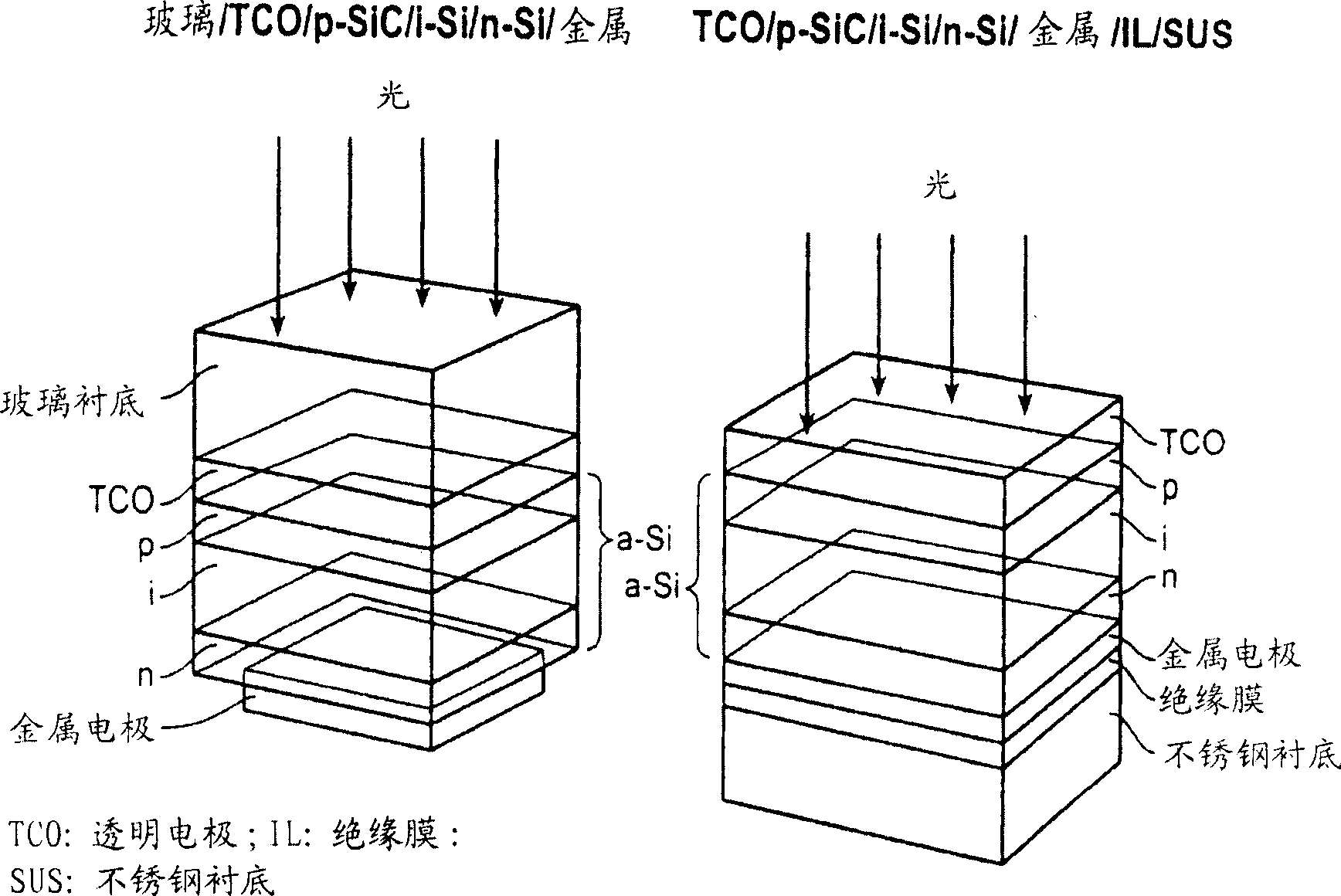Photovoltaic device with nanostructured layers
A photovoltaic device and nanostructure technology, which is applied to the surface coating liquid device, coating, special surface, etc., can solve the problems of difficult processing temperature, inability to obtain, poor efficiency, etc.
- Summary
- Abstract
- Description
- Claims
- Application Information
AI Technical Summary
Problems solved by technology
Method used
Image
Examples
Embodiment Construction
[0066] Embodiments of the invention relate generally to the field of photovoltaic or solar cells. More particularly the present invention provides photovoltaic devices having IR and / or UV absorbing nanostructured layers. The terms photovoltaic device and solar cell are used interchangeably throughout the description.
[0067] The invention further relates to cost-effectively increasing the efficiency of solar cells by integrating IR photon absorption or harvesting and / or UV photon absorption or harvesting nanostructured materials. In some embodiments, nanostructured materials are associated with crystalline silicon (monocrystalline or polycrystalline) solar cells and thin film (amorphous silicon, microcrystalline silicon, CdTe, CIGS, and III-V materials) solar energy that absorb primarily in the visible region. One or more integrations in the battery. In some embodiments, the nanostructured material includes one or more nanoparticles integrated with a first layer of material...
PUM
 Login to View More
Login to View More Abstract
Description
Claims
Application Information
 Login to View More
Login to View More - R&D
- Intellectual Property
- Life Sciences
- Materials
- Tech Scout
- Unparalleled Data Quality
- Higher Quality Content
- 60% Fewer Hallucinations
Browse by: Latest US Patents, China's latest patents, Technical Efficacy Thesaurus, Application Domain, Technology Topic, Popular Technical Reports.
© 2025 PatSnap. All rights reserved.Legal|Privacy policy|Modern Slavery Act Transparency Statement|Sitemap|About US| Contact US: help@patsnap.com



